Seven Questions Over Breakfast with Jennifer Yerkes
 June 10th, 2014 by jules
June 10th, 2014 by jules
 This interview has been several years in the making.
This interview has been several years in the making.
Back in 2012, when I juried for the Bologna Children’s Book Fair, I was delighted to see a little book called Drôle d’oiseau, published by France’s Éditions MeMo in 2011. The book went on to receive a Mention for the Opera Prima Award that year. (The Opera Prima Award is given to debut artists.) It also received here in the States the 2013 Gold Medal for the Society of Illustrators’ Original Art award, as it was released in the U.S. by Sourcebooks Jabberwocky as A Funny Little Bird. Jennifer, as you’ll read below, was born here in the U.S. but now makes her home overseas — and has for many years. (So, yes, her debut picture book was published in French yet translated later into her mother tongue, as she notes in a response below.)
The book was described by professional reviewers as fresh, innovative, highly-original, thought-provoking, infinitely clever … I could go on. To say the artwork is spare is an understatement. Yerkes’ protagonist in the book consists of primarily negative space, as you can see in some of the spreads below. Pictured above, in fact, in the spread opening this post is the cover art. (It pains me to put a border around it, but I want you to be able to click on it and see it in more detail, if you’re so inclined, and if I don’t put the border, I think cyberspace adds a big, ugly thick border. Also, please note that if you click on it, the colors in the larger version are slightly off. They’re brighter than they appear in the book.)
Where was I? Oh, it’s a delightful book on many levels, and I’m glad Jennifer’s here to talk about it, to share lots of art, to let us know what’s next for her, and to give us a peek into her sketchbooks. We’re going to have lots of coffee. A typical breakfast for her involves that and then, “about two hours later: four slices of well-buttered toast. Or if I’m lucky enough to make it to the bakery, a cinnamon ‘cross.'” I say we splurge and have all of the above.
I thank her for visiting. Let’s get to it …
Jules: Are you an illustrator or author/illustrator?
Jennifer: Author/Illustrator, as of a couple years ago. Graphic designer/Illustrator first, though.
Jules: Can you list your books-to-date?
Jennifer:
- Drôle d’oiseau [spread pictured below], published by Éditions MeMo, 2011 (A Funny Little Bird, the North American edition, was published by Sourcebooks Jabberwocky in 2013)
- À vue d’oeil (or At First Glance), published by Éditions Notari and out on shelves as of 25 April
- Une parfaite journée printanière (or A Perfect Spring Day), a work in progress with Éditions Notari, which should be out early next year, if all goes as planned!
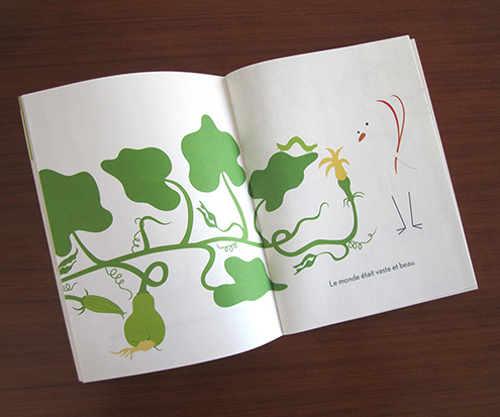
[The world is full of beautiful things, he thought.]”
Jules: What is your usual medium?
Jennifer: I’ve used various mediums over the years, depending upon the project. Drôle d’oiseau was supposed to be a cut-paper project, for example. But there was the problem of shadows. So I did something I thought I’d never do and … went digital.
When not doing things digitally, I usually fall back on markers and pens and pencils in the end, though there’s been a recent watercolour resurgence.
The story I’m currently working on is being done with coloured pencils. It makes me so very happy to be working everything out entirely by hand!
Jules: If you have illustrated for various age ranges (such as, both picture books and early reader books OR, say, picture books and chapter books), can you briefly discuss the differences, if any, in illustrating for one age group to another?
Jennifer: My frst two published books and the book in progress are marketed for age ranges from 0-8. But I’ve done illustrations for all ages. In the end, the style used comes partly from the targeted age group , I guess. But it always develops with the reading of the accompanying text and/or the conversations with my clients. I love playing with forms and colours, whether digitally or with paper and scissors and so on. But I also love drawing and painting in simple to more detailed ways. I don’t think I could stick to one style all the time.

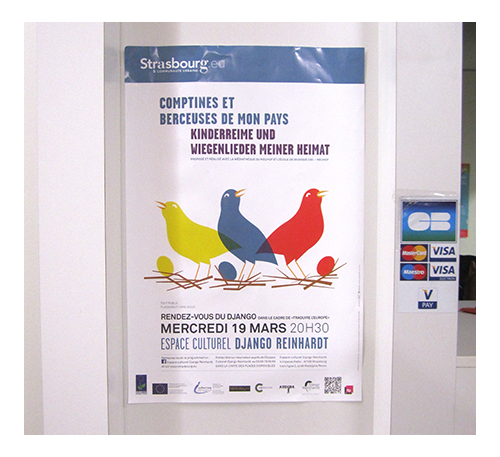
by the Strasbourg-Neuhof Main Library & Django Reinhardt Cultural Center
(Neuhof, Strasbourg), 2013
Jules: Where are your stompin’ grounds?
Jennifer: I spent a great deal of my childhood in Iowa City, Iowa. Then I spent years moving around Europe, studying and—ahhh!—just being. Then a great friend of mine called me in Budapest to ask if I was ever coming back to Strasbourg, and I said, “funny, but I was just trying to decide what to do next!” And next thing I knew, I was looking for a place in Strasbourg. And a few years later, that great friend of mine and I got married. That was more than a decade ago, and here we still are, stompin’ around. Though now we’ve got twin mini-stompers in tow!









Jules: Can you tell me about your road to publication?
Jennifer: I was creating an illustration project for a group of very small children. The idea was that I would create a story, and they would use different techniques over a period of months to illustrate it, and then we would print the results. I’d done this before with young children, but never this young. Some of them had difficulty holding a crayon! And many of them came from tough backgrounds. So I needed to come up with something to really intrigue them. And also something that could be easily illustrated in pleasing ways — in order to help that initial intrigue grow into real interest.
One day, I had the phrase “drôle d’oiseau” foating around in my head. A number of ideas floated through, while ruminating on what could be so funny about a little bird. And then, without any warning, the whole project just came together: the kids would dress up an otherwise unadorned “funny little bird”!
So, I wrote the story — but quickly realised that this was the story that the illustrator inside me had been waiting for for years, and so…
[Most of the time, it was as if he was invisible. Or almost.]”
(Click to enlarge, though the colors in the enlarged version are a bit off)
[Now the funny little bird isn’t alone anymore. And he never shows off.]”
(Click to enlarge, though the colors in the enlarged version are a bit off)
I came up with another project for the workshop and started working on the funny little bird myself. And when I’d finished, I hemmed and hawed, not knowing what to do with it, and my husband said, “SEND IT!” So we went into the boys’ bedroom and looked at the spines of our favourite French books. Éditions MeMo was everywhere on those shelves, so I emailed them.
And two days later, I got an email from Christine Morault (the Mo of MeMo), saying, “We are interested. IF you are willing to cut some of the text.” And I said, “I am MORE than willing to cut some text!” The truth is, I had already started doing that. Which, looking back on it all, seems to have augured well for the months to come: the fact that we were seeing eye-to-eye from the start, even before we’d gotten to know one another, I mean.
And the rest is history!


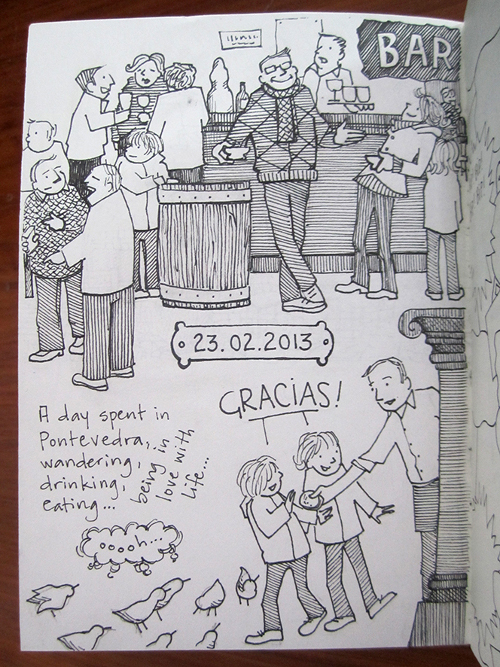


Jules: Can you please point readers to your web site and/or blog?
Jennifer: My (still under construction) site: cargocollective.com/jennifer-yerkes and ye aulde blog: jennifer-yerkes.blogspot.fr (in French, but there’s a translation option on the left-hand side. Keeping two blogs, one in English and one in French, was too time-consuming!)
(Click to enlarge)
Jules: If you do school visits, can you tell me what they’re like?
Jennifer: I love doing school, library, etcetera visits. Really and truly. To start with, the adults who program them are usually doing so because they like your work. And they’ve almost always instilled some—or a lot—of that in the children. Often, they’ve prepared for the visit by doing amazing projects, based upon your book. So it is obviously gratifying. But it is also humbling, because you see all that they’ve put into their work, and you are witness to an immense amount of imagination and intelligence.
To date, most of my visits have involved short workshops, which is a lot of fun and also, frankly, inspiring. One of the simplest things I do with groups of children is also an across-the-board favourite. Afer a reading, followed by questions and answers and discussion, I give them an A3-size piece of paper on which are printed the eyes, beak, and legs of Funny Little Bird, in different poses taken directly from my first book. The children are invited to dress their bird in whatever way they wish. I give them ideas, of course, because some children need that kind of kick-start. But whether they are inspired by one of my ideas or do their own thing, the birds they create are truly, extraordinarily wonderful. I would love to print a book of their works, to be honest!

Jules: If you teach illustration, by chance, tell me how that influences your work as an illustrator.
Jennifer: Ahh … hm! I teach Illustration to children aged 3-12 and Design to 18-22 year-olds. A big part of how teaching (both illustration and design) influences my work has to do with the amount of studying up you need to do as a teacher. You have to know that you know what you’re talking about. And you have to come up with lesson plans that interest both the students and you, their teacher. Otherwise, why bother? So you’re always researching, always on the look-out for new ideas, new ways of bringing something good out of your students.
The truth is that it’s thanks to teaching small children how to illustrate that I came up with the “idea I’d been waiting for all my life”! It feels like it was bound to happen. I wasn’t thinking of the children, exactly, nor of the things that I want to teach them about life; it all just came together, seemingly spontaneously. It wasn’t until my copies of that first book arrived that I realised what an enormous number of experiences actually went into it, including those of a mother and art teacher and old kid.






Jules: Any new titles/projects you might be working on now that you can tell me about?
Jennifer: À vue d’oeil was out on the shelves on 25 April. Although it’s a wordless book, there is a kind of a story in there. But it’s more of a game than a story: trickery involving shapes and colours and patterns.
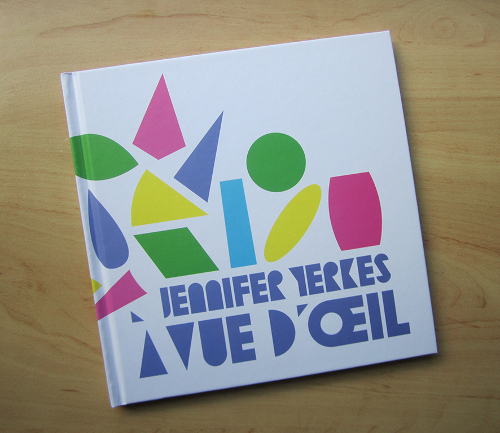



I’m currently working with the Notaris on Une parfaite journée printanière [pictured below], creating images using only coloured pencil. It’s something of a challenge, which I always enjoy. In any case, every time I sit down to work on it, I feel like I’m sitting down with a friend. Sometimes I lose track of the time. Last night, for instance, I looked up after a while and was shocked to see that it was 2 a.m.!
I’m also working with a friend of mine, Claire Perret, on a book with the working title Il s’est passé quelque chose (or Something Happened). I wrote the story a few months back, but every time I started sketching it out, I’d see her illustrations on the pages in my head. Thankfully, she saw her illustrations on those pages, too!
(Click to enlarge)
After those are done, there are a number of ideas for children’s books that are vying for attention. And I’m also working on two ideas for graphic novels, one with the working title Flight and the other called Nunzio (the title of the play by Spiro Scimone that inspired it).
Otherwise, I’m creating a pop-up image for an exhibit; a cut-out-and-fold-and-glue accordion-style book for a Swiss literary journal called Le Persil; and I’m finalising and starting to think of sending out feelers for a project for a wooden block set I call Little Architect.
 Okay, we’ve got more coffee, and it’s time to get a bit more detailed with seven questions over breakfast. I thank Jennifer again for visiting 7-Imp.
Okay, we’ve got more coffee, and it’s time to get a bit more detailed with seven questions over breakfast. I thank Jennifer again for visiting 7-Imp.
1. Jules: What exactly is your process when you are illustrating a book? You can start wherever you’d like when answering: getting initial ideas, starting to illustrate, or even what it’s like under deadline, etc. Do you outline a great deal of the book before you illustrate or just let your muse lead you on and see where you end up?
Jennifer: Good question!
I have two published books. The one with text began with the title. The wordless book began because I was looking at a children’s book, and at first glance, I saw a shape within a part of one of the illustrations, which had nothing to do with the intent of the illustrator — and my book was pretty much born then and there. The text and images for the one I’m currently working on came together pretty much at the same time, though I needed to work out the text before I could really get going on the images. Their choreography and the flow of the phrases really have to work together.
À vue d’oeil and, in an accidental way, a couple of the preliminary sketches for another project that I printed myself but that I’m hoping to be able to publish for real, soon, which I call ZUT! Alors or OH! Well… I’d already finished a ‘chapter’ of ZUT! Alors and printed it up but hadn’t yet gotten back to the other ‘chapters,’
when I got the idea for At First Glance, while working on another project with the Notaris. This gave me the chance to work with a few of the ideas that were originally for ZUT, though I think that the windmill is the only one that comes pretty much directly from the earlier project/idea. These sketches were scanned for a mini-exhibit in a boutique called Nairami in Bologna this year.”
(Click each image to enlarge)
Most of the small, hand-made books I’ve made are either wordless or word-thrifty. When a wordless book/pamphlet/other comes about, it’s often because of a phrase or a word that kick-starts images in my head. But sometimes it’s just a funny idea that kicks things off. And the squillions of ideas for books that have been piling up all over my studio over the years follow similar patterns as the ones outlined above, depending upon the weight of the words.
I really enjoy the research process and tend to get caught up for a long time in sketching out possibilities — sometimes even just sketching the same thing over and over, until something in me decides that this is (or isn’t) “it.” More than that, though, I think I just need time to think — to let things sink in, sift out, come together, reach a conclusion. Then, when I “really start working,” I really start working.
(Click each to enlarge)
2. Jules: Describe your studio or usual work space.
Jennifer: I’m between studios right now. I love my home studio, with its stained glass windows and balcony doors and cozy-but-open, funny-formed space and the walk-in supply closet. But I really had to get out of the home and have some contact with the outside world. When the chance came, I hemmed and hawed a bit … and then jumped at it. It’s only been a few months now, but I really feel like it was the right decision.
Besides myself, there are several other graphic artists, my designer studio-mate, a screen-printer and illustrator, a DJ, a small publishing house, and four arts associations in the same building. But I still work from home on the weekends or when the job is demanding.



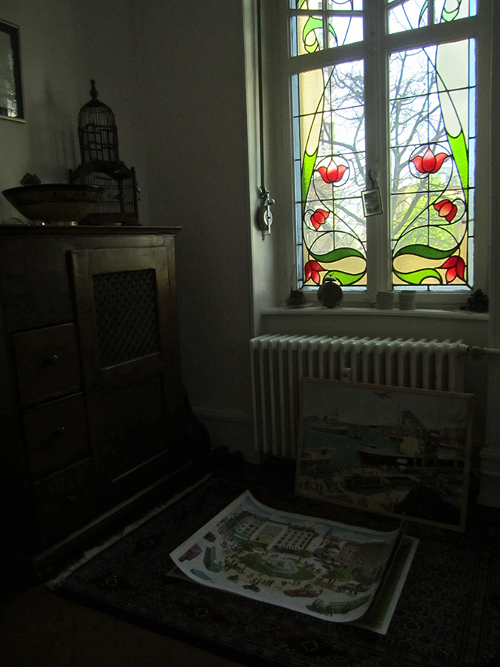


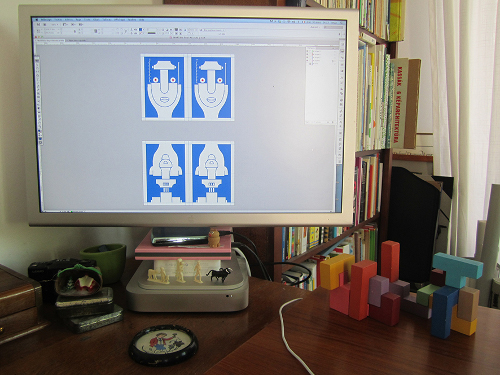
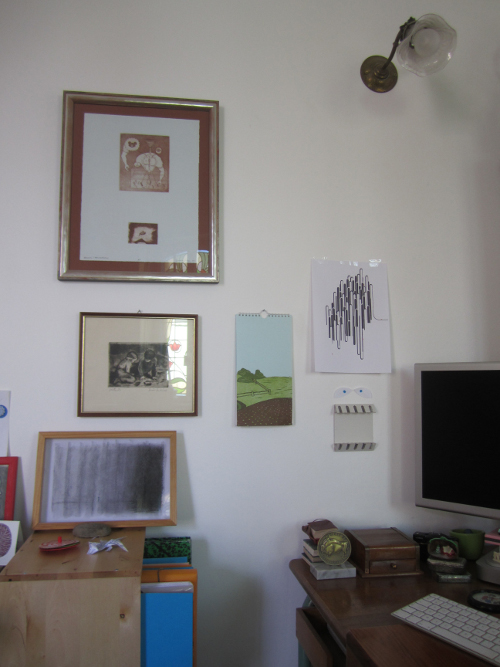


in the deepest recesses of the studio closet …”

(Click to enlarge image)
3. Jules: As a book-lover, it interests me: What books or authors and/or illustrators influenced you as an early reader?

Jennifer: [she laughs] Oh … so-o-o-o many books, so little space! [She laughs again, and starts racking her brain]
For one thing, I was one of the crowd of kids who received Cricket magazine, starting somewhere close to Volume 1. There were so many great authors and illustrators between those pages.
 And then, of course, there was Maurice Sendak. Everything by Maurice Sendak. My favourite Sendak book is Kenny’s Window. It makes me hollow with grief to think that the person who came up with that story is no longer with us.
And then, of course, there was Maurice Sendak. Everything by Maurice Sendak. My favourite Sendak book is Kenny’s Window. It makes me hollow with grief to think that the person who came up with that story is no longer with us.
And every single thing I’ve ever read by Arnold Lobel. My boys and I laugh and laugh every time we read Mouse Tales. And I weep just thinking of “Tear-water Tea” or “Owl and the Moon.”
Ezra Jack Keats’ The Snowy Day still gives me goosebumps. It’s so gorgeous and dreamy. Leo Lionni’s Frederick and many of his other titles, too.
And I recently nabbed a few old faves from the bookshelves, before my parents moved out of our childhood home, including Wallace Tripp’s Jennifer’s Rabbit; Strega Nona; Who’s Got the Apple?; Squawk to the Moon, Little Goose; Too Much Noise; The Fox Went Out on a Chilly Night; the Eva Le Gallienne version of The Nightingale; Gorey’s pop-up, The Dwindling Party …*

Also, The Maggie B., given to me (and in a way to my little brother, too) just before the birth of our first little sister. A huge influence, really — and still a favourite with my 10-yr-old boys, too. (I have a book’s worth to say about picture books and supposed age-appropriateness.)
My parents were English-majors-turned-editor and -bookbinder and gave us books for every occasion. There were four children, which over the ages, meant a LOT of books. And one of the great things about being the oldest of four was that I could still gorge myself on great books that were ostensibly for younger children until I was leaving home for college. And that next Christmas, my parents gave me the Lisbeth Zwerger version of A Christmas Carol, which, I think, sealed my fate as a lifelong children’s book reader and collector.
*I know I’m going to be sick about leaving someone(s) out when I read this later, but in the interest of leaving some blog space for your next interviewee …
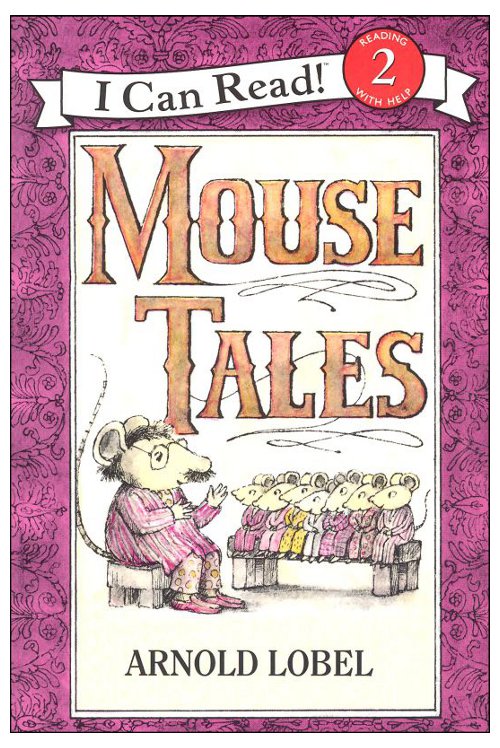
4. Jules: If you could have three (living) authors or illustrators—whom you have not yet met—over for coffee or a glass of rich, red wine, whom would you choose? (Some people cheat and list deceased authors/illustrators. I won’t tell.)
Jennifer: Tomi Ungerer* (though it would have to be a couple of glasses of whiskey), Enzo and Iela Mari (whom I’m counting as one), and Katsumi Komagata.
* I’m cheating a bit here, because although we’ve met, we’ve yet to have a glass of wine or whiskey together: Tomi Ungerer’s Strasbourg home is very close to ours, and last October, we met in the local grocery store. We were chatting as he paid and bagged up his groceries, and he asked, “Do you have a car?” I said, “No, but I’m the mother of twin boys, so I have strong arms!” He laughed and let me take his bags, and we walked back to his home, chatting all the while. He is such a charming, easy-going person that it took until I’d left and was some distance from his home for the reality of it all to settle in. A funny little aside: My husband and I are huge fans of Ungerer’s work and decided to name one of our twins after him. The boys were meant to be born around 7 January, but they popped out unexpectedly on the morning of 28 November. And couple of years later, reading a bio of Ungerer, I noticed his birthdate: 28 November 1931! (Our other little whippersnapper is called Leo, after Leo Lionni.)


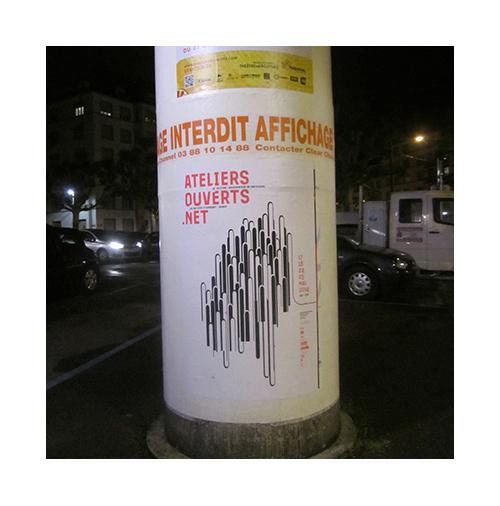
in Strasbourg (from May 2014)
(graphics — S. Riedinger)
5. Jules: What is currently in rotation on your iPod or loaded in your CD player? Do you listen to music while you create books?
Jules: [she squints at the stereo] The Fall, Siskiyou, Ian & Sylvia, Music From the Penguin Café, Yo La Tengo, Tune-Yards, Richard Thompson, Debut Italian 3 + 4, Randy Newman, Sufjan Stevens, Fredo Viola, The Sixth Great Lake, Daniel Johnston, Rufus Wainwright (his dad’s in the other room), The Tallis Scholars, and a number whose cases are turned around.
Our stereo dates from about 1988 (no, I’m not joking), so only one of those albums is actually loaded, but I can’t tell which!
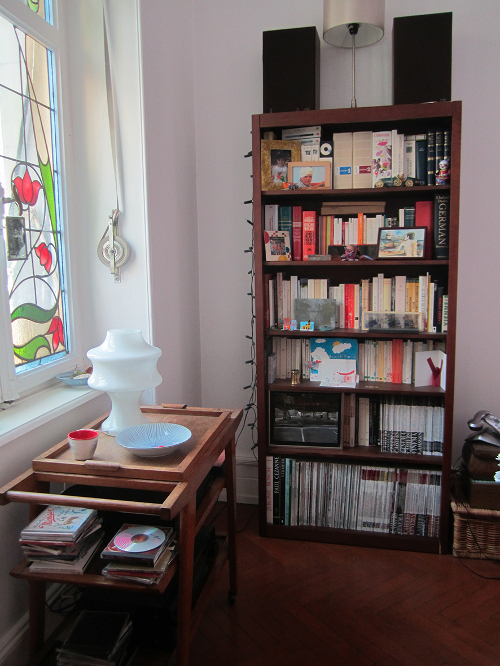
for the Picon and Martini bottles.”
Sometimes I feel a real need for music when I create, and other times at the end of the day, I look up, shake my head, rub my eyes, and realise that it’s been silent all day (except for the scraping of pens and pencils or the tapping on the keyboard)!
so I include the pics for fun.”
(Click each to enlarge)
6. Jules: What’s one thing that most people don’t know about you?
Jennifer: As a kid, I dreamed of becoming a race car driver. Sometimes I still do. (But I’ve never owned a car!)





plus one of the images created to facilitate the workshop “Me Martian?”
7. Jules: Is there something you wish interviewers would ask you — but never do? Feel free to ask and respond here.
Jennifer: Umm … Yeah:
“How did it feel to be translated into your mother tongue?”
Tough. I still don’t really know how to answer that one!
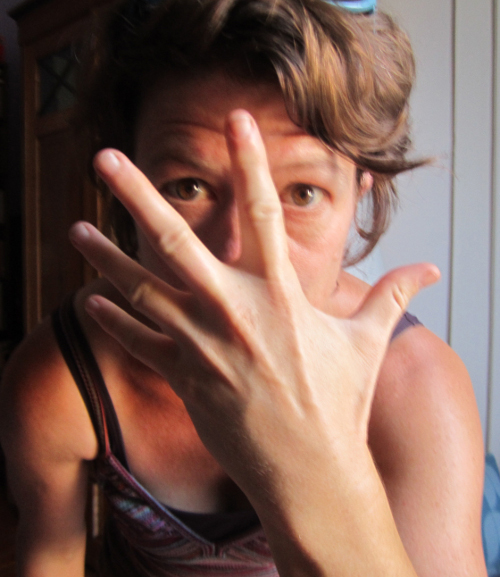
one of our sons has produced.”

Jules: What is your favorite word?
Jennifer: Can’t decide. “Whippersnapper”? Or “criminy”?
Jules: What is your least favorite word?
Jennifer: Any of a number connected with racism, misogyny, bigotry of any kind.
Jules: What turns you on creatively, spiritually or emotionally?
Jennifer: The wind in the trees, water lapping, crickets chirping, delighted laughter …
Jules: What turns you off?
Jennifer: Racism, misogyny, bigotry of any kind.
7-Imp: What is your favorite curse word? (optional)
Jennifer: “Hogwash!” (when I don’t feel like really cursing).
Jules: What sound or noise do you love?
Jennifer: The wind in the trees, water lapping, crickets chirping, delighted laughter.
Jules: What sound or noise do you hate?
Jennifer: Tires screeching.
Jules: What profession other than your own would you like to attempt?
Jennifer: Race car driver! (I know, I know, but even if I were a race car driver, I wouldn’t want to hear tires screeching!)
Jules: What profession would you not like to do?
Jennifer: Honestly, I don’t know how dentists can stand it.
Jules: If Heaven exists, what would you like to hear God say when you arrive at the Pearly Gates?
Jennifer: “Come in, stranger.” Then a pearl-handled guitar could start strumming, and familiar voices might be heard joining in: “I know you’re weary from all your miles, just sit right there in your easy chair and tell me about all the places you’ve been ….”
Either that, or “Don’t worry. I don’t mind that you were wrong. Come on in and make yourself at home!”
All artwork and images are used with permission of Jennifer Yerkes.
The spiffy and slightly sinister gentleman introducing the Pivot Questionnaire is Alfred, © 2009 Matt Phelan.




















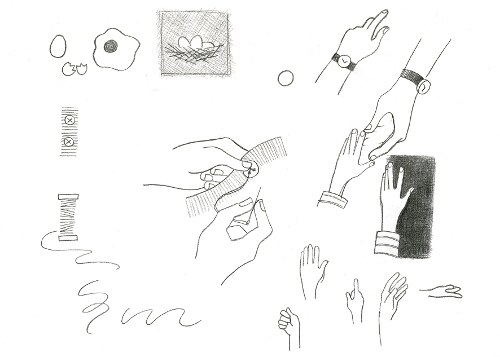


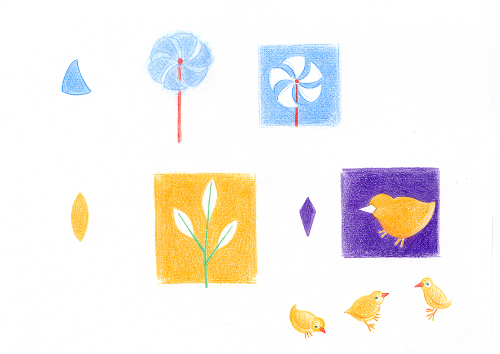







love, love LOVE Jennifer’s work! This will keep me inspired for a long time.
so much fun to read this interview – thank you Jules and Jennifer! I so enjoyed encountering this intriguing work – and all the wonderful studio photos. AND I have always adored “The Molly B” – so loved seeing it here as an inspiration for you. One thing I was sad to read – I just painted the backside of a little travel carrier I made for farm animals (for a trip with my granddaughter) with a farm scene I thought so clever -much like Jennifer’s – road and pond and barn, thinking she could set up the animals atop it and play. but sounds like perspective stopped that from happening for Jennifer’s boys! Oh well, it is a carrier.
Thank you again, always love to come back to this blog!
Thank you, too, Toni and Katy, for your lovely messages!
Katy: no need to be sad – they still played on them! ha! ha! No, really: the paintings weren’t up to par, and I didn’t really think about anything but the connecting points in the road (so they could place them any which way they wanted) before laying down the paint – no sketches, no nothing. So in the end, they just looked like strange paintings. I’d lay them out on the floor, and the boys would just play “whatever” and “however” they felt like on them. I’m sure you put more thought into yours – and your granddaughter will love them – like even my boys did, only probably more!